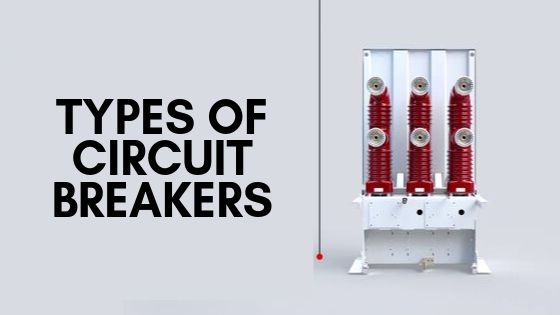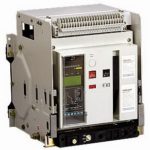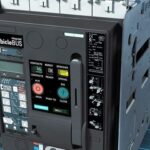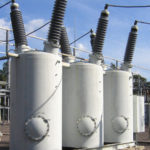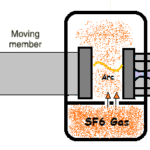A circuit breaker is a switching device which can be operated manually as well as automatically for controlling and protection of electrical power system respectively. Before reading further, read What is a Circuit breaker and What is Switchgear.
Circuit Breakers are classified into a number of types, based on different categories. In this article, we will learn the different types of circuit breakers, their working, uses, and ratings.
As the modern power system deals with huge currents, the special attention should be given during designing of the circuit breaker to safe interruption of the arc produced during the operation of the circuit breaker.
It should be noted here that there are no specific criteria of classifying the circuit breakers, but instead, there are a number of ways in which we can categorize them for our easier understanding and knowledge of the operating conditions of the device.
These different categories can be according to the medium in which the circuit breaker operates, the actuating signal on which it works, the different types of constructing and working principles, etc.
Each type of circuit breaker has its own advantages and disadvantages. The construction and working of these circuit breakers with special emphasis on the way the arc extinction is facilitated are explained in the articles listed in this page.
An overview of all the different types of circuit breakers, mentioning their names and how they have been classified as shown in the first part. Further ahead, we will discuss some of the widely used types nowadays.
Types of Circuit Breakers
Circuit breakers are classified into different types based on the following criteria.
- Based on the voltage level
- Low voltage circuit breaker
- Medium voltage circuit breaker
- High voltage circuit breaker
- Based on where is installed
- Outdoor circuit breaker
- Indoor circuit breaker
- Based on the actuating mechanism
- Spring Operated Circuit breaker
- Pneumatic circuit breaker
- Hydraulic circuit breaker
- Based on the arc interrupting medium
- Based on External characteristic design
- Live tank circuit breaker
- Dead tank circuit breaker
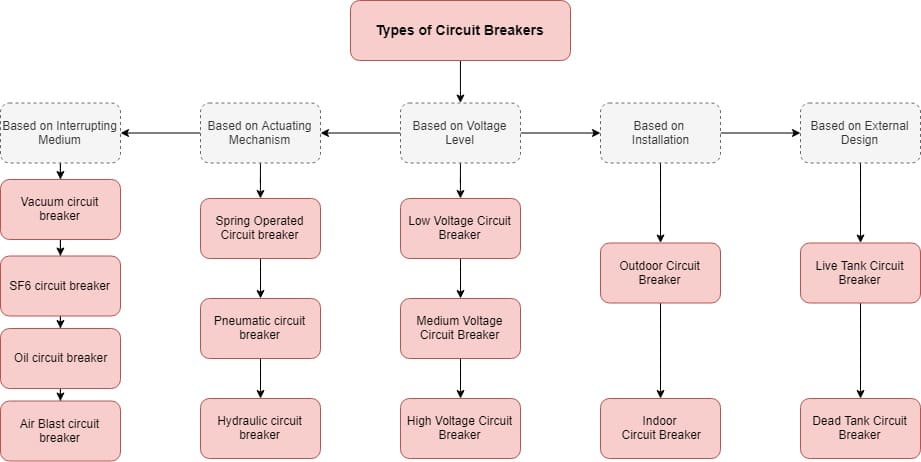
Circuit Breaker Types based on Voltage Level
Firstly we classify the circuit breakers according to the voltage levels they can operate on. So there are three most used types of circuit breakers in this category. These are:
- Low Voltage Circuit Breakers (< 1 kV)
- Medium Voltage Circuit Breakers (1-72 kV)
- High Voltage Circuit Breakers (> 72 kV)
1. Low Voltage Circuit Breakers
A low – voltage circuit breaker is one which is suited for circuits rated at 1000 volts or lower.
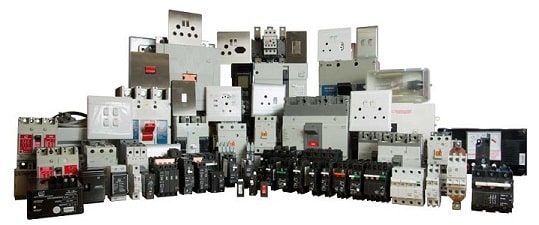
Low-voltage circuit breakers are common in domestic, commercial and industrial applications. Most commonly used low-voltage circuit breakers are, miniature circuit breaker, molded case circuit breaker, earth leakage circuit breaker, and Residual current protective devices.
- MCB (Miniature Circuit Breaker)—rated current not more than 100 A.
- MCCB (Molded Case Circuit Breaker)—normal rated current is up to 2,500A with the thermal or thermal-magnetic operation.
The characteristics of low-voltage circuit breakers are given by international standards such as IEC 947. These circuit breakers are often installed in draw-out enclosures that allow removal and interchange without dismantling the switchgear.
2. Medium Voltage Circuit Breaker
Medium-voltage circuit breakers rated between 1 and 72 kV may be assembled into metal-enclosed switchgear lineups for indoor use, or maybe individual components installed outdoors in a substation.
The characteristics of MV breakers are given by international standards such as IEC 62271.
Medium-voltage circuit breakers nearly always use separate current sensors and protective relays, instead of relying on built-in thermal or magnetic overcurrent sensors.
Medium-voltage circuit breakers can also be classified by the medium used to extinguish the arc as Vacuum, SF6, Airblast, and oil circuit breaker.
3. High Voltage Circuit Breaker
Electrical power transmission networks are protected and controlled by high-voltage breakers.
The definition of high voltage varies but in power transmission work is usually thought to be 72.5 kV or higher, according to a recent definition by the International Electrotechnical Commission (IEC).
High-voltage circuit breakers are broadly classified by the medium used to extinguish the arc:
1. Bulk oil circuit breaker
2. Minimum oil circuit breaker
3. Airblast circuit breaker
4. Vacuum circuit breaker
5. SF6 circuit breaker
6. CO2 circuit breaker
Circuit Breaker Types based on Installation
Another very important category is where to use the circuit breaker. This may seem a bit weird at first, but when installing a breaker, you must have to take care of it will be used inside your home or any other building or it has to be installed somewhere outdoors. This is because the outer mechanical body of the breaker has to be designed accordingly for it to be tough and protective to prevent the internal circuitry from damaging. So two more types can be:
- Outdoor circuit breaker
- Indoor circuit breaker
1. Indoor Circuit breaker
Indoor Circuit breakers are designed for use only inside buildings or weather-resistant enclosures. Generally, indoor circuit breakers are operated at a medium voltage with a metal clad switchgear enclosure.
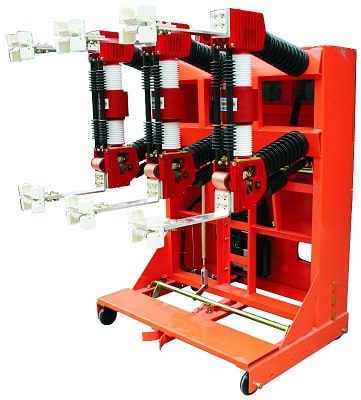
2. Outdoor Circuit Breaker
Outdoor Circuit breakers are designed to use at outside without any roof. So these breakers external enclosure arrangement will be strong compared to indoor breakers to withstand wear and tear.
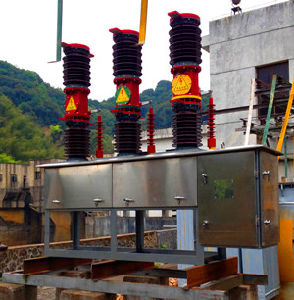
Circuit Breaker Types based on Actuating Mechanism
There is another category which is based on the mechanism used to actuate the circuit breaker, which specifies the mechanism of operation of the breaker, there are three further types:
- Spring operated circuit breaker
- Pneumatic circuit breaker
- Hydraulic circuit breaker
A spring-operated mechanism is one driven by the mechanical energy stored in springs. Typically, the “closing spring” is mechanically charged by a motor and is held in its compressed position by a closing latch.
A hydraulic-operated mechanism uses pressurized gas to direct the flow of oil, thus actuating the linkage(s) connected to the interrupter(s).
A pneumatic-operated mechanism uses compressed air as the energy source for closing and tripping.
Circuit Breaker Types based on Interrupting Medium
Now considering the medium in which a circuit breaker can operate.
The most general way of classification is on the basis of the medium used for arc extinction. The medium used for arc extinction is usually oil, air, sulfur hexafluoride (SF6) or vacuum.Accordingly, circuit breakers may be classified into:
- Oil circuit breaker which employs some insulating oil (eg., transformer oil) for arc extinction
- Air Blast circuit breaker in which high-pressure air-blast is used for extinguishing the arc.
- SF6 circuit breaker in which sulfur hexafluoride (SF6) gas is used for arc extinction.
- Vacuum circuit breaker in which vacuum is used for arc extinction.
Circuit Breaker Types based on External Design
Based on their structural design the circuit breakers are classified as
- dead tank circuit breakers and
- live tank circuit breakers.
A breaker which has its enclosed tank at ground potential is called as dead tank circuit breakers.
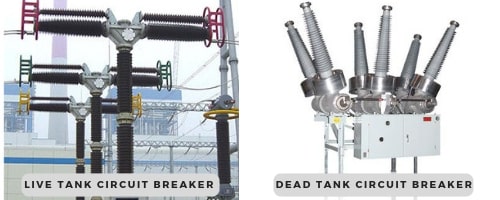
A Breaker which has its tank housing the interrupter is at potential above the ground is called as a live tank circuit breaker.
Other Types of Circuit Breaker
The following are some other types of circuit breakers classified based on various criteria.
- Interrupting medium– Air, Airblast, Magnetic blast, Vacuum, Oil circuit breaker, Gas-insulated circuit breaker (GIS)
- According to service– Indoor or outdoor circuit breaker
- The way of operation– Gravity opened, gravity closed and horizontal break circuit breaker
- Action– Automatic and non-automatic circuit breaker
- Method of control– Direct control or remote (manual, pneumatic or electrical) control
- The way of mounting– Panel mounted the rear of panel or remote from panel type.
- Tank construction– Separate tank for each pole type or one tank for all poles type, Live tank or Dead tank
- Contacts– Butt, Wedge, Laminated flat contacts
Important Circuit Breaker Types
Each type of circuit breaker has its own advantages and disadvantages. In the following sections, we shall discuss these circuit breakers with special emphasis on the way the arc extinction is facilitated.
1. Oil Circuit Breakers
In oil type of circuit breakers, some insulating oil (in, transformer oil) is used as an arc quenching medium.
The contacts are opened under oil and an arc is struck between them. The heat of the arc evaporates the surrounding oil and dissociates it into a substantial volume of gaseous hydrogen at high pressure.
The hydrogen gas occupies a volume about one thousand times that of the oil decomposed. The oil is, therefore, pushed away from the arc and an expanding hydrogen gas bubble surrounds the arc region and adjacent portion of the contacts.
The arc extinction is facilitated mainly by two processes.
- Firstly, the hydrogen gas has high heat conductivity and cools the arc, thus aiding the de-ionization of the medium between the contacts.
- Secondly, the gas set up turbulence in the oil and forces it into the space between contacts, thus eliminating the arcing products from the arc path.
The result is that arc is extinguished and circle current interrupted.
2. Air-Blast Circuit Breakers
These type of circuit breakers employ a high-pressure air-blast as a quenching medium.
The contacts are opened in a flow of air-blast established by the opening of the blast valve. The air-blast cools the are and sweeps away the arcing products to the atmosphere.
This rapidly increases the dielectric strength of the medium between contacts and prevents from re-establishing the are.
Consequently, the arc is extinguished and the flow of current is interrupted.
3. Sulphur Hexafluoride SF6 Circuit Breaker
In such type of circuit breakers, sulphur hexafluoride (SF6) gas is used as the arc quenching medium.
The SF6 is an electronegative gas and has a strong tendency to absorb free electrons.
The contacts of the breaker are opened in a high-pressure flow of SF6 gas and an arc is struck between them. The conducting free electrons in the arc are rapidly captured by the gas to form relatively immobile negative ions.
This loss of conducting electrons in the are quickly builds enough insulation strength to extinguish the arc.
The SF6 circuit breakers have been found to be very effective for high power and high voltage service.
4. Vacuum Circuit Breakers (VCB)
In such type of circuit breakers, vacuum (degree of vacuum being in the range from 10 to 10 torr) is used as the are quenching medium.
Since vacuum offers the highest insulating strength, it has far superior are quenching properties than any other medium.
For example, when contacts of a breaker are opened in vacuum the interruption occurs at first current zero with dielectric strength between the contacts building up at a rate thousands of times higher than that obtained with other circuit breakers.
Principle of VCB
The arc formation in a vacuum circuit breaker and its extinction can be explained as follows:
When the contacts of the breaker are opened in a vacuum (10 to 10 tor), an arc is produced between the contacts by the ionization of metal vapors of contacts.
However, the arc is quickly extinguished because the metallic vapours, electrons, and ions produced during arc rapidly condense on the surfaces of the circuit breaker contacts, resulting in quick recovery dielectric strength.
The reader may note the salient feature of vacuum as an arc quenching medium. As soon as the arc is produced in vacuum, it is quickly extinguished due to the fast rate of recovery of dielectric strength in vacuum.
Comparison of Different Types of Circuit Breakers
Here is a table on comparing different circuit breakers for easy reference.
| Type | Medium | Voltage-Breaking Capacity | Design Features | Remarks |
|---|---|---|---|---|
| Air-break Circuit-breaker | Air at atmospheric pressure | 430-600V, 5-15-35 MVA recently 3.6-12 kV, 500 MVA | Incorporates: Arc runners, arc splitters, magnetic coils | Used for medium to low voltages A.C. D.C. Industrial circuit-breakers. Have current limiting features. |
| Miniature C.B. | Air at atmospheric pressure | 430-600 V | Small size, current limiting feature | Used for Low and Medium Voltages. |
| Bulk-Oil Circuit-breaker | Dielectric oil | 12 kV, 3.6 kV | One tank up to 36 kV, 3 tanks above 36 kV, fitted with arc control devices | Getting obsolete used up to 12 kV, 600 MVA. |
| Minimum oil Circuit-breaker | Dielectric oil | Preferred for 3.6 kV to 145 kV | The circuit breaking chamber is separate from supporting chamber. Small size, Arc control device used. | Used for metal enclosed switchgear up to 36 kV, Outdoors type between 36 and 245 kV. Now superseded by SF6 CB. |
| Air-blast Circuit-breaker | Compressed air (20-30) kg/cm^2 | 245 kV, 35,000 MVA up to 1100 kV, 50,000 MVA | Unit type construction, several units per pole, auxiliary compressed air system required. | Suitable for all EHV applications, fast opening closing. Also for Arc Furnace Duty. Now Superseded by SF6 CB for 145 kV, and above. |
| SF6 Circuit-breaker Single pressure puffer type SF6 GIS | SF6 gas (5 kg/cm2) | 145 kV, 7500 MVA; 245 kV, 10,000 MVA; 12 kV, 1000 MVA; 36 kV, 2000 MVA; 420 kV, 40 kA | One interrupter pole up to 245 kV | Suitable for SF6 switchgear and Medium voltage switchgear. EHV circuit breaker. Maintenance free. |
| Vacuum Circuit-breaker | Vacuum | Preferred for indoor switchgear rated up to 36 kV, 750 MVA | Variety of designs, long life, modest maintenance. | Suitable for a variety of application from 3.6 kV to 36 kV |
| H.V.D.C. Circuit-breaker | Oil or Air-Blast | 33 kV, 2kA | Artificial current zero by switching in capacitors. | Used for Metallic Return Transfer Breaker. |
